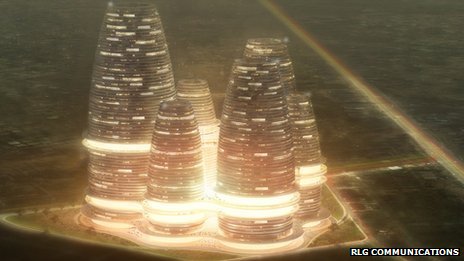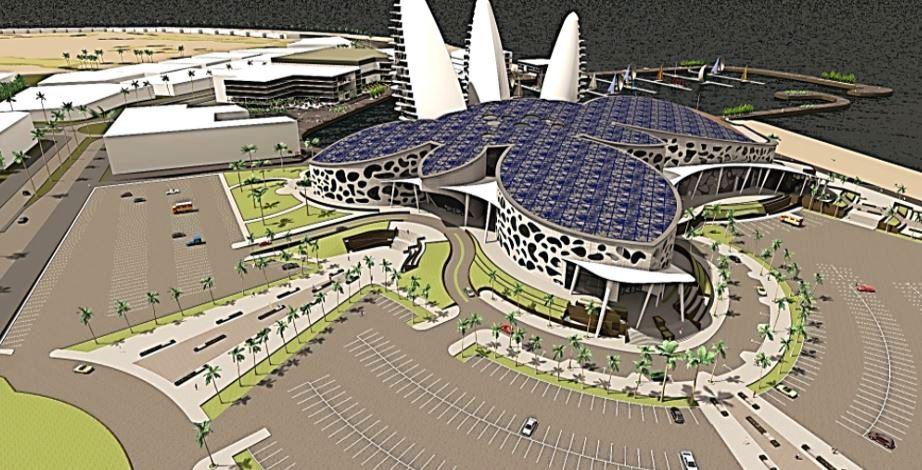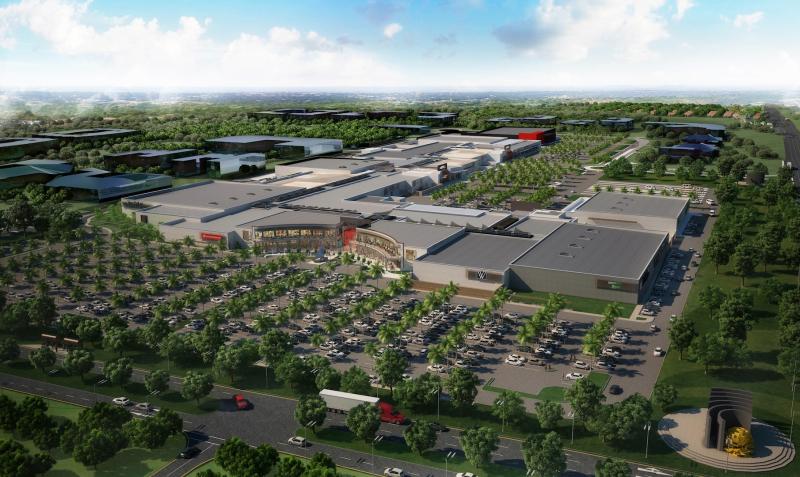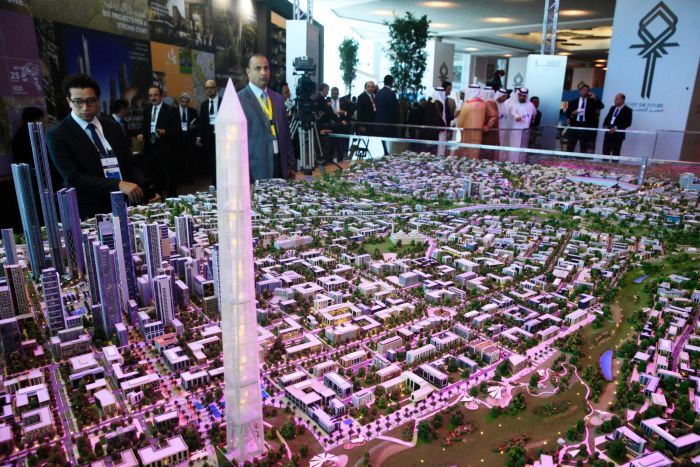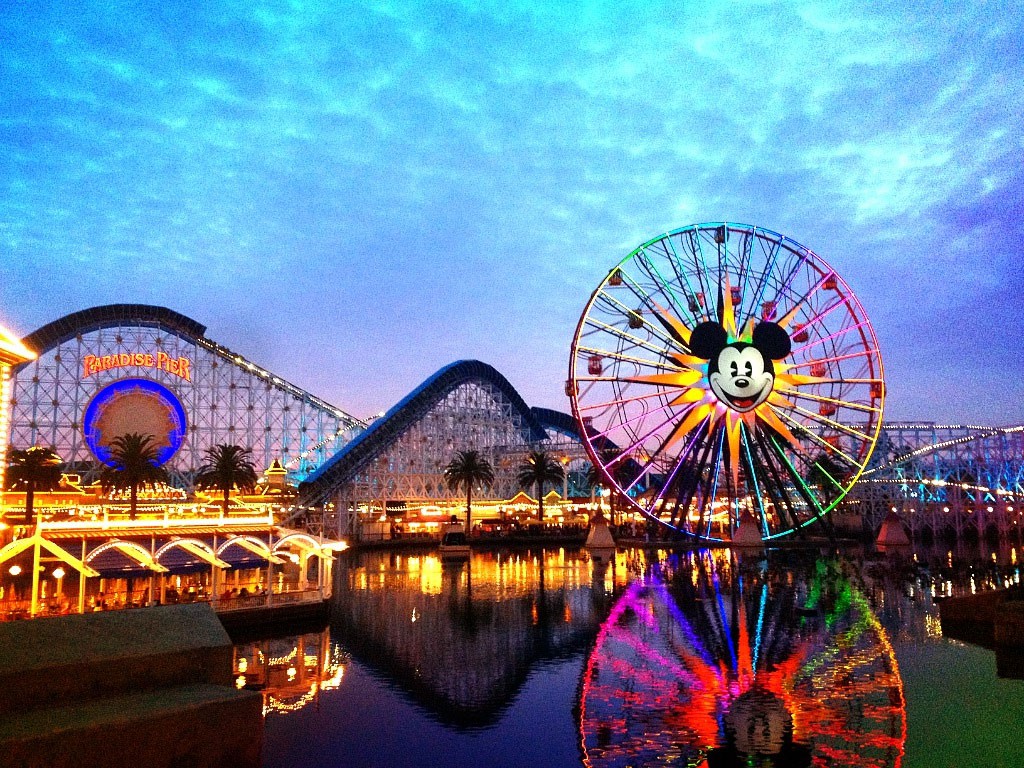Hydroelectricity is the term referring to electricity generated by hydropower; the production of electrical power through the use of the gravitational force of falling or flowing water. It is the most widely used form of renewable energy, accounting for 16 per cent of global electricity generation – 3,427 terawatt-hours of electricity production in 2010, and is expected to increase about 3.1% each year for the next 25 years. Hydropower is produced in 150 countries, with the Asia – Pacific region generating 32 per cent of global hydropower in 2010.
It is also a flexible source of electricity since the amount produced by the station can be changed up or down very quickly to adapt to changing energy demands. However, damming interrupts the flow of rivers and can harm local ecosystems, and building large dams and reservoirs often involves displacing people and wildlife. [tweetthis]Once a hydroelectric complex is constructed, the project produces no direct waste, and has a considerably lower output level of greenhouse gas carbon dioxide (CO2) than fossil fuel-powered energy plants.[/tweetthis]
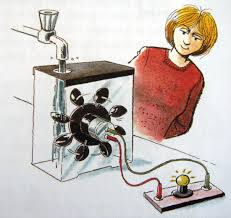
Generating methods
Conventional (dams)
Most hydroelectric power comes from the potential energy of dammed water driving a water turbine and generator. The power extracted from the water depends on the volume and on the difference in height between the source and the water’s outflow. This height difference is called the head. A large pipe (the “penstock”) delivers water from the reservoir to the turbine.
Pumped-storage
This method produces electricity to supply high peak demands by moving water between reservoirs at different elevations. At times of low electrical demand, the excess generation capacity is used to pump water into the higher reservoir. When the demand becomes greater, water is released back into the lower reservoir through a turbine. Pumped-storage schemes currently provide the most commercially important means of large-scale grid energy storage and improve the daily capacity factor of the generation system. Pumped storage is not an energy source, and appears as a negative number in listings.
Run-of-the-river
Run-of-the-river hydroelectric stations are those with small or no reservoir capacity so that only the water coming from upstream is available for generation at that moment, and any oversupply must pass unused. A constant supply of water from a lake or existing reservoir upstream is a significant advantage in choosing sites for run-of-the-river. In the United States, the run of the river hydropower could potentially provide 60,000 megawatts (80,000,000 hp) (about 13.7% of total use in 2011 if continuously available).
Tide
A tidal power station makes use of the daily rise and fall of ocean water due to tides; such sources are highly predictable, and if conditions permit construction of reservoirs, can also be dispatchable to generate power during high demand periods. Less common types of hydro schemes use water’s kinetic energy or undammed sources such as undershot waterwheels. Tidal power is viable in a relatively small number of locations around the world. [tweetthis]In Great Britain, there are eight sites that could be developed, which have the potential to generate 20% of the electricity used in 2012.[/tweetthis]
Advantages and disadvantages
Advantages
Flexibility
Hydropower is a flexible source of electricity since stations can be ramped up and down very quickly to adapt to changing energy demands. Hydro turbines have a start-up time of the order of a few minutes. It takes around 60 to 90 seconds to bring a unit from cold start-up to full load; this is much shorter than for gas turbines or steam plants. Power generation can also be decreased quickly when there is a surplus power generation. Hence the limited capacity of hydropower units is not generally used to produce base power except for vacating the flood pool or meeting downstream needs. Instead, it serves as a backup for non-hydro generators.
Low power costs
The major advantage of hydroelectricity is the elimination of the cost of fuel. The cost of operating a hydroelectric station is nearly immune to increases in the cost of fossil fuels such as oils, natural gas or coal, and no imports are needed.
Hydroelectric stations have long economic lives, with some plants still in service after 50–100 years. Operating labour cost is also usually low, as plants are automated and have a few personnel on-site during normal operation.
Where a dam serves multiple purposes, a hydroelectric station may be added with relatively low construction cost, providing a useful revenue stream to offset the costs of dam operation. Additionally, some data shows that in most countries large hydropower dams will be too costly and take too long to build to deliver a positive risk-adjusted return unless appropriate risk management measures are put in place.
Suitability for industrial applications
While many hydroelectric projects supply public electricity networks, some are created to serve specific industrial enterprises. Dedicated hydroelectric projects are often built to provide the substantial amounts of electricity needed for aluminium electrolytic plants, for example.
Suitability for Agricultural applications
Dozens of hydroelectric projects – ranging from less than one kilowatt (1kW) to several dozen megawatts (MW) – are being actively pursued by individual farmers, hospitality operators and agricultural co-operatives in all nine provinces. Small hydroelectric projects tapping into existing Department of Water Affairs and other infrastructure are having a profound impact on the profitability and sustainability of individual farmers, farming communities and agri-businesses.
Reduced CO2 emissions
Since hydroelectric dams do not burn fossil fuels, they do not directly produce carbon dioxide. While some carbon dioxide is produced during the manufacture and construction of the project, this is a tiny fraction of the operating emissions of equivalent fossil-fuel electricity generation. According to studies, hydroelectricity produces the least amount of greenhouse gases and externality of any energy source. Coming in second place was wind, third was nuclear energy, and fourth was solar photovoltaic. The low greenhouse gas impact of hydroelectricity is found especially in temperate climates. Greater greenhouse gas emission impacts are found in the tropical regions because the reservoirs of power stations in tropical regions produce a larger amount of methane than those in temperate areas.
Other uses of the reservoir
Reservoirs created by hydroelectric schemes often provide facilities for water sports and become tourist attractions themselves. In some countries, aquaculture in reservoirs is common. Multi-use installed for irrigation support agriculture with a relatively constant water supply. Large hydro dams can control floods, which would otherwise affect people living downstream of the project.
Disadvantages
Ecosystem damage and loss of land
Hydroelectric power stations that use dams would submerge large areas of land due to the requirement of a reservoir.
Large reservoirs associated with traditional hydroelectric power stations result in submersion of extensive areas upstream of the dams, sometimes destroying biologically rich and productive lowland and riverine valley forests, marshland and grasslands. The loss of land is often exacerbated by habitat fragmentation of surrounding areas caused by the reservoir.
Hydroelectric projects can be disruptive to surrounding aquatic ecosystems both upstream and downstream of the plant site. The generation of hydroelectric power changes the downstream river environment. Water exiting a turbine usually contains very little suspended sediment, which can lead to scouring of river beds and loss of riverbanks. Since turbine gates are often opened intermittently, rapid or even daily fluctuations in river flow are observed.
Siltation and flow shortage
When water flows it has the ability to transport particles heavier than itself downstream. This has a negative effect on dams and subsequently their power stations, particularly those on rivers or within catchment areas with high siltation. Siltation can fill a reservoir and reduce its capacity to control floods along with causing additional horizontal pressure on the upstream portion of the dam. Eventually, some reservoirs can become full of sediment and useless or over-top during a flood and fail.
Changes in the amount of river flow will correlate with the amount of energy produced by a dam. Lower river flows will reduce the amount of live storage in a reservoir, therefore, reducing the amount of water that can be used for hydroelectricity. The result of diminished river flow can be power shortages in areas that depend heavily on hydroelectric power. The risk of flow shortage may increase as a result of climate change.
Methane emissions (from reservoirs)
Lower positive impacts are found in the tropical regions, as it has been noted that the reservoirs of power plants in tropical regions produce substantial amounts of methane. This is due to plant material in flooded areas decaying in an anaerobic environment and forming methane, a greenhouse gas. According to the World Commission on Dams report, where the reservoir is large compared to the generating capacity (less than 100 watts per square metre of surface area) and no clearing of the forests in the area was undertaken prior to impoundment of the reservoir, greenhouse gas emissions from the reservoir may be higher than those of a conventional oil-fired thermal generation plant.
Relocation
Another disadvantage of hydroelectric dams is the need to relocate the people living where the reservoirs are planned. In 2000, the World Commission on Dams estimated that dams had physically displaced 40-80 million people worldwide.
Failure risks
Because large conventional dammed-hydro facilities hold back large volumes of water, a failure due to poor construction, natural disasters or sabotage can be catastrophic to downriver settlements and infrastructure. Dam failures have been some of the largest man-made disasters in history.
Smaller dams and micro hydro facilities create less risk but can form continuing hazards even after being decommissioned.
Comparison with other methods of power generation
Hydroelectricity eliminates the flue gas emissions from fossil fuel combustion, including pollutants such as sulfur dioxide, nitric oxide, carbon monoxide, dust, and mercury in the coal. Hydroelectricity also avoids the hazards of coal mining and the indirect health effects of coal emissions. Compared to nuclear power, hydroelectricity generates no nuclear waste, has none of the dangers associated with uranium mining, nor nuclear leaks.
Compared to wind farms, hydroelectricity power stations have a more predictable load factor. If the project has a storage reservoir, it can generate power when needed. Hydroelectric stations can be easily regulated to follow variations in power demand.
Power Generation in South Africa
South Africa makes use of the following forms of power generation: Coal, Gas Turbine, Hydro, Nuclear, Wind, Solar Photovoltaic, Solar CSP (Concentraded Solar Power) and Landfill Gas. The highest capacity (MW) is Coal, with Hydro coming in at third.
South Africa produces around 240,300 gigawatt-hours (865,000 TJ) electricity annually. Most of this electricity is consumed domestically, but around 12,000 gigawatt-hour is annually exported to those countries participating in the Southern African Power Pool (SAPP).
The following utilities are SAPP members: Mozambique (Electricidade de Mozambique, HCB, Motraco); Botswana (Botswana Power Co-operation); Malawi (Electricity Supply Commission of Malawi); Angola (Empresa National de Electricidade); South Africa (Eskom); Lesotho (Lesotho Electricity Corporation); Namibia (Nam Power); DRC (Societe National d’ Electricite); Swaziland (Swaziland Electricity Board); Tanzania (Tanzania Electric Supply Company); Zambia (Zambia Electricity Supply Corporation); and Zimbabwe (Zimbabwe Electricity Supply Authority).
South Africa supplements its electricity supply by importing around 9,000 gigawatt-hours per year from the Cahora Bassa hydroelectric generation station in Mozambique via the 1,920 MW Cahora Bassa high-voltage direct current transmission system. As of September, the exports were expected to reach full capacity as maintenance had been ongoing at the dam.
Most power stations in South Africa are owned and operated by Eskom and these plants account for 95% of all the electricity produced in South Africa and 45% of all electricity produced on the African continent.
Cahora Bassa (HVDC)
Cahora-Bassa (previously spelt Cabora Bassa) is the name for an HVDC (high voltage direct current) power transmission system between the Cahora Bassa Hydroelectric Generation Station at the Cahora Bassa Dam in Mozambique, and Johannesburg, South Africa.
The Cahora Bassa system is the largest hydroelectric scheme in southern Africa with the powerhouse containing five 415 megawatts (557,000 hp) turbines. Most of the power generated is exported to South Africa, which is done by the Cahora Bassa HVDC system, a set of high voltage direct current lines. The system includes two converter stations, one at Songo in Mozambique and the other at Apollo in South Africa. There are two parallel power lines between these two stations, covering 1,400 km, of which 900 km is in Mozambican territory. These HVDC lines work at 533 kV and in Mozambique territory only have about 4,200 towers.
Currently, there’s a Request for Proposal out for the Botswana – South Africa (BOSA) Transmission Project (DTA 537608) requesting a Transaction Advisor.
Hydroelectric in South Africa:
Tubatse Pumped Storage Scheme – Limpopo
Ingula Pumped Storage Scheme – Kwazulu-Natal
Drakensberg Pumped Storage Scheme – Free State
Palmiet Pumped Storage Scheme – Western Cape
Gariep Dam – Free State
Steenbras Power Station (Pumped Storage) – Western Cape
Vanderkloof Dam – Northern Cape
Collywobbles – Mbhashe – Eastern Cape
Ncora Dam – Eastern Cape
Sol Plaatje Power Station – Free State
Merino Power Station – Free State
Kakamas Hydro Electric – Northern Cape
Kruisvallei Hyfro – Free State
Major Hydroelectric Projects in Africa:
Grand Ethiopian Renaissance Dam – 6,000 MW Ethiopia 2011 – 2017 Located in the upper Nile Basin, drawing complaints from Egypt
Inga 3 Project in DRC: Building of massive hydroelectric dam in DRC set to begin in 2017
Sources
Wikipedia Hydro
Wikipedia Power
Wikipedia HVDC
Wikipedia Bassa
Eskom
BizNews
Energy
To view more Articles, please visit our Leads 2 Business Blog.
If you are interested in becoming one of our subscribers, please visit Leads 2 Business.
To view notes with screenshots on how to use our website, please visit Leads 2 Business Wiki.
I started working at Leads 2 Business in February 2005, and have served as Head of Department of Daily Tenders from 2007 until the present. I oversee both the Daily Tenders South Africa and Africa Departments.































